Red is the color of passion, love and vibrant energy. In the plant kingdom, vivid ruby hues stand out against backdrops of green, immediately catching the eye. Red plants bring striking visual beauty to any garden.
What Makes Plants Red?
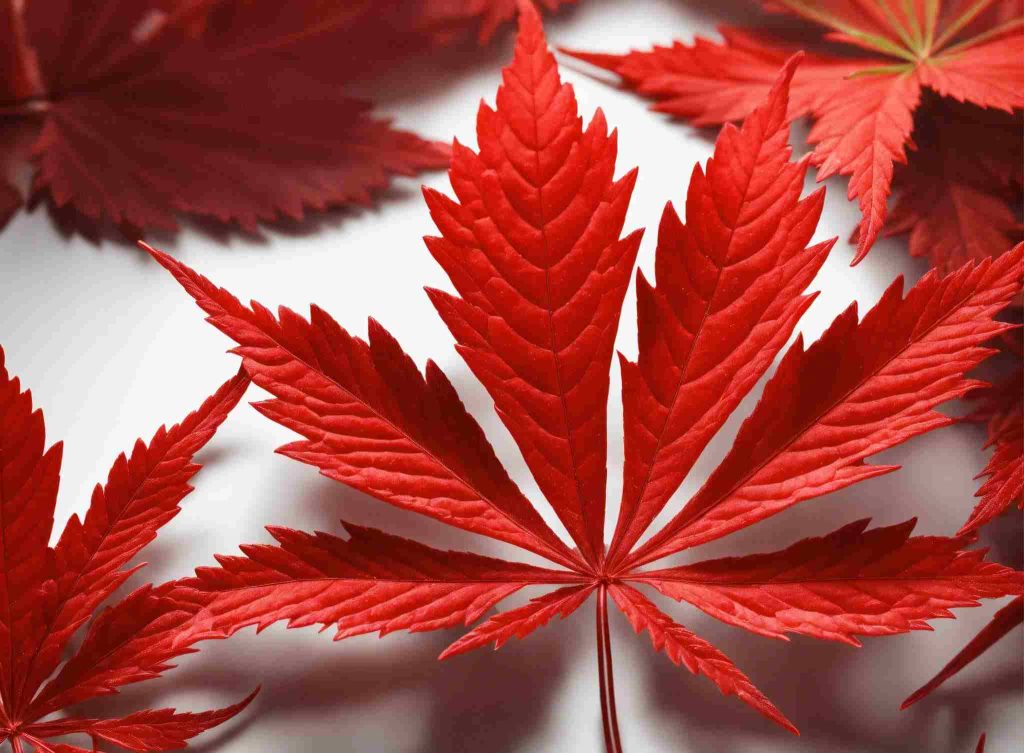
Unlike animals, plants do not have blood or hemoglobin. So what makes vibrant crimson pigments arise in flora? Generally, three main plant pigments create scarlet shades:
Anthocyanins
These water-soluble pigments belong to a class of compounds called flavonoids synthesized through the plant’s metabolic shikimate pathway. Over 600 unique forms of anthocyanins exist in nature, offering a wide palette for plants to access rich red tones.
They act as a natural sunscreen, protecting plants from UV rays, and also attract pollinators and deter herbivores with their vivid colors.
Lycopene
A red carotenoid found in tomatoes and watermelons, lycopene does not convert to vitamin A but has antioxidant properties that protect plants from free radicals
Betalains
Less common than anthocyanins, these nitrogen-containing pigments give beets and cacti their red color. Betalains and anthocyanins do not coexist in the same plant; they replace each other depending on the species. Betalains are stored in cell structures called betalain vacuoles, which emit rich red hues.
The Ecology Behind Red Foliage
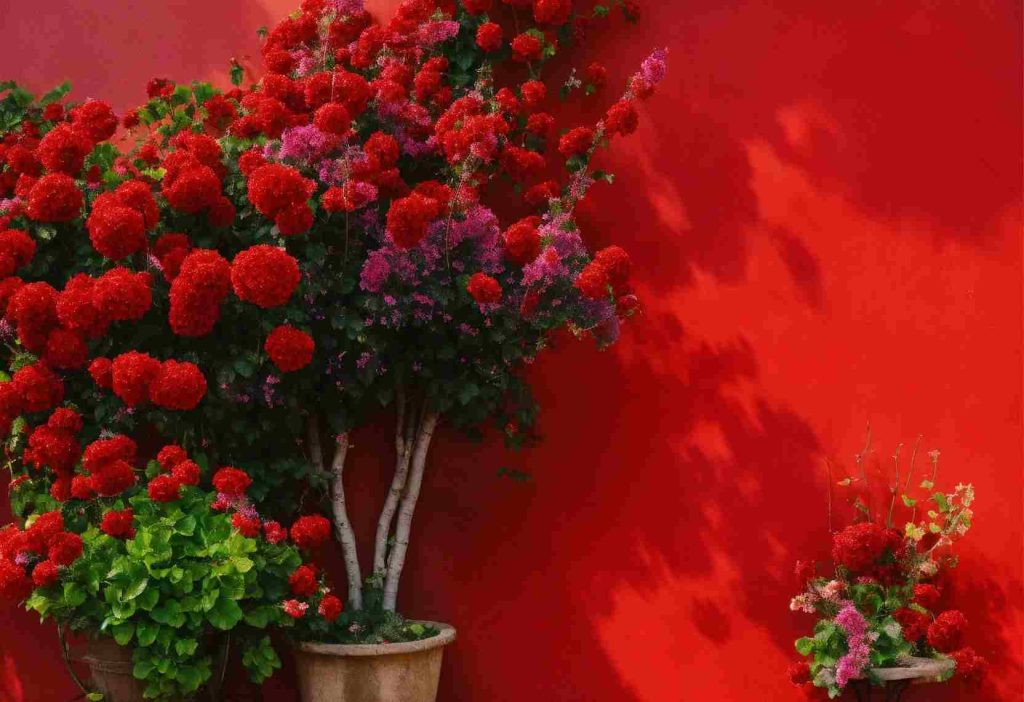
In nature, anthocyanin expression usually increases when plants face stressors, creating adaptive advantages. The pigments’ UV-blocking capacity helps shield leaves under excessive light exposure. Anthocyanins also defend plants from extremes of cold, drought, heavy metals and nutrient deficiencies. These compounds act as antioxidants to counter cell damage from environmental stress.
Producing vibrant red pigments carries a metabolic cost, requiring up to 20% of a plant’s energy budget. This steep price means plants only synthesize anthocyanins when ecological factors incentivize the expenditure.
Young red leaves and shoots may better resist predators compared to greens, allowing juvenile growth to safely expand a plant’s reach. Red plants also contrast brightly against verdant backdrops, better attracting pollinators. Only plants that meet pollinators’ sensory capacities and dietary needs advertise themselves this way. These co-evolutionary factors shape anthocyanic expression through natural selection.
Stunning Scarlet Stems
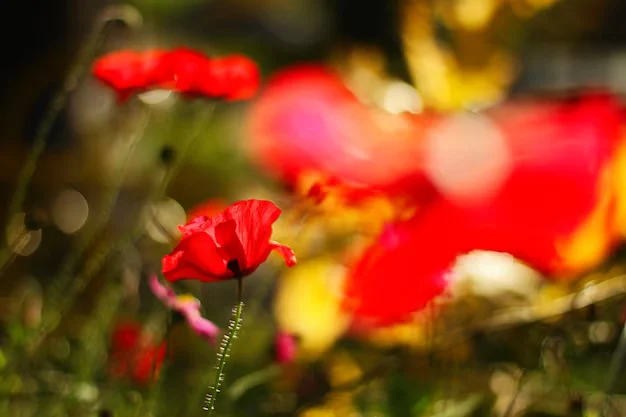
While green chlorophyll masks red hues in most foliage, some plants channel anthocyanins into their stems and trunks instead. When cold stresses break down chlorophyll, stem pigments shine through in brilliant ruby tones. This winter coloration offers continued photosynthetic potential through colored plant tissues instead of leaves.
Some plants also intensely flush red when grown in full sun. Anthocyanins protect underlying cells from overexposure while still allowing some light capture. Filtered through transparent skins, red stems create a diffuse, easing glow.
Here are some plants prized for their red stems:
Red Twig Dogwood
Native across northern North America, these woody shrubs offer interest across all four seasons. Green summer foliage turns red-bronze in fall. Fleshy white berries feed over 20 bird species through winter. The main draw lies hidden below though, with crimson stems lighting up gloomy winters.
For best red color, prune older stems after two years of growth. The younger shoots that emerge flush much redder. Site red twig dogwoods to catch low winter light across their aerial frameworks.
Arctic Willow
One of the hardiest vascular plants, arctic willows withstand frigid temperatures of -50°C in their native Arctic and alpine environments. Broadleaf and narrowleaf varieties occur across the northern latitudes of North America, Europe and Asia.
In winter, arctic willow stems shine cardinal red, contrasting brightly against snowy backdrops. Grazing mammals like reindeer and muskoxen slowly prune the shrubs as they munch on twigs. This habit helps continuously renew the plants’ youngest red growth.
Red Cornel Dogwood
Another dogwood species beloved for it’s red stems, red cornel offers richer ruby color compared to it’s northeast American cousin. Unlike red twig dogwood, red cornel does not need yearly pruning to maintain vivid coloration. Red stems occur copiously even on mature, uncut branches.
Small yellow flowers tinge red cornel’s green summer foliage. While the species hails from Siberia, this dogwood grows readily across North America, withstanding cold winters and prospering even in shade. Trees reach 15-20 feet at maturity in landscape settings.
Bloodtwig Dogwood
This European dogwood species marks the far end of the ruby red spectrum, living up to it’s sanguine common name. Bloodtwig dogwood offers the richest red stem coloration of any cornelian cherry, with younger stems appearing almost crimson. Like it’s relatives, bloodtwig dogwood flowers attractively in spring and offers wildlife value from it’s small sour fruits.
Whether massed in groupings or planted solo, bloodtwig’s glistening garnet stems shine even in winter gloom. Allow space for it’s broad, multi-stemmed form to spread 10 feet or more over time.
Vibrant Red Leaves
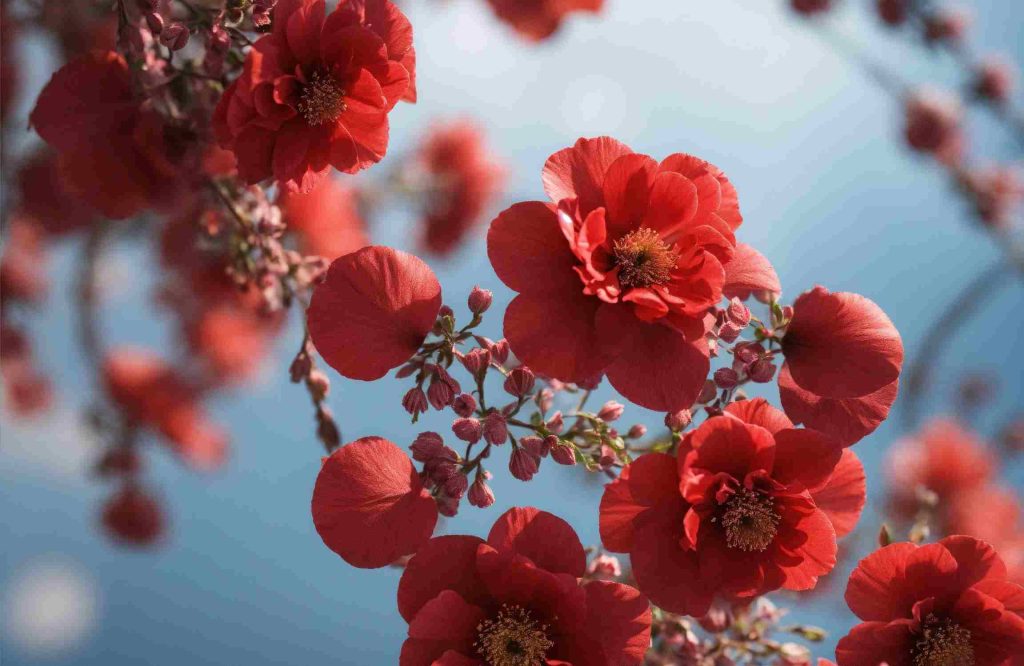
While most plants sequester red pigments only in their stems and roots, some dazzling plant species produce true red leaves. This coloration amazes as a rare outlier to typical green foliage:
Red Clover
Familiar to many as a hardy lawn “weed”, red clover brings richness to ecological lawns and meadows. This European native’s characteristic reddish pink flowers provide nectar for pollinators from spring to fall. But hidden beneath the blooms, red clover’s dark burgundy leaves also add dimensionality to lawns, contrasting smoothly against grass blades.
Red clover fixes nitrogen from air into soils, helping nourish lawns naturally. It’s deep roots further protect surrounding grass plants from drought. The next time you see red clover blooms, peek below to appreciate the foliage too.
Purple Shamrock
Despite it’s name, purple shamrock sprouts stunning red feathery leaves. This South African native hails from highland grasslands, where growth ceases in the dry winter season. As water returns in spring, vivid new foliage bursts forth in jewel tones.
The intricacy of purple shamrock’s foliage makes it a perfect houseplant. It thrives happily on any bright windowsill. For fullest growth, water whenever the soil dries down half an inch below the surface. Fertilize monthly during the growing period.
Redleaf Rose
While their flowers take center stage, even rose bushes can surprise us with red foliage. Many dark leaved roses retain deep purple-red pigments in their leaves, with the undersides of leaves often glowing richer red than tops.
Redleaf varieties like the aptly named ‘Redleaf Rose’ particularly accentuate this warm, dusky red foliar color. Contrasted against cerise pink blooms, the overall effect stops garden visitors in their tracks. Site redleaf roses against neutral fences and arbors to really make their stunning leaves shine.
How to Grow Red Plants
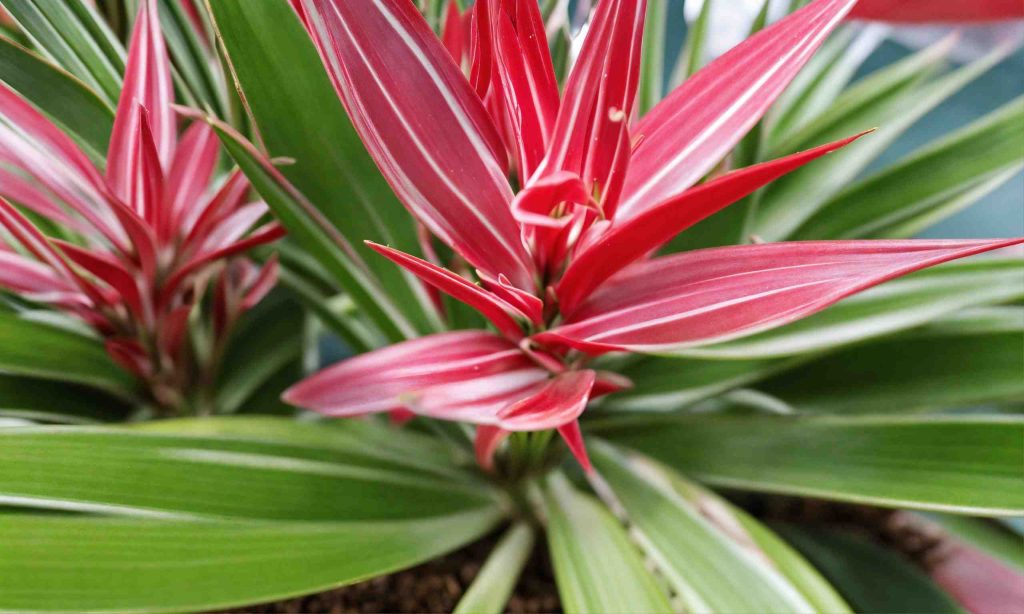
Many red plants grow readily in gardens and containers with minimal care. Match plants to site conditions that best encourage red pigmentation:
Pick the Right Variety
Look for plants with red leaves, stems, or flowers. Examples are red mustard, bougainvillaea, and firecracker plants. Some only turn red in cool weather, too.
Provide Lots of Light
Most red plants need at least 6 hours of direct sun daily. Morning sun is preferred over hot afternoon rays, and their colour can fade under shade.
Use Well-Draining Soil
Red plant varieties like average to dry soil conditions. After watering, make sure the potting mix or garden beds drain freely. Too much moisture can cause rot.
Feed Regularly
The vibrant red colour needs lots of nutrients. Feed every few weeks with liquid fertilizer or compost. Magnesium helps reds stay vibrant.
Beware of Hot Temps
Intense heat and dry air can scorch red foliage. Provide afternoon shade in hot climates and keep soil evenly moist when it’s super hot out.
Group Them Together
Red plants make a significant impact when planted in bold drifts. Use them as bedding plants or in containers. Nearby green plants complement fiery reds nicely.
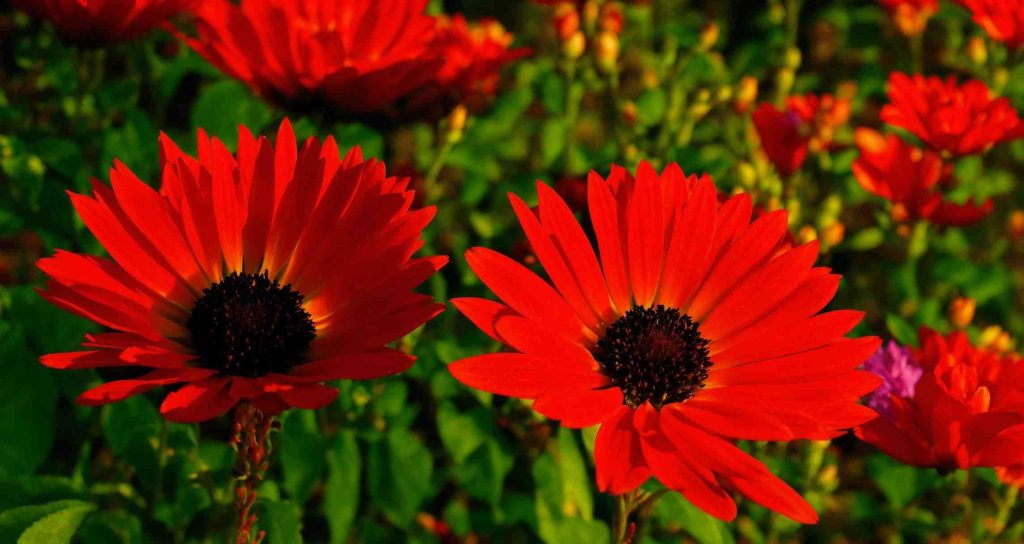
Caring for Red Plants
Regular watering is crucial, especially during dry spells, as many red plants do not tolerate drought well. Feed them with a balanced fertilizer to promote healthy growth without sacrificing their color. Pruning helps maintain their shape and encourages fuller growth.
Conclusion
In conclusion, red plants offer striking beauty and visual interest that can make your garden or landscaping pop. By understanding what causes their vibrant red pigments and providing the right growing conditions, it’s easy to cultivate these attention-grabbing plants.
With some primary care, like ample sunlight, well-draining soil, and occasional feeding, you can enjoy the bold, fiery tones of red foliage, stems, and flowers in your outdoor spaces.
Red plants are a simple way to add colour, contrast, and a touch of living artwork to any home garden.
FAQs
Plant leaves may turn red due to high production of anthocyanin pigments. Anthocyanins protect plant leaves and stems from environmental stresses like sunlight, cold temperatures, drought and nutrient deficiencies. These red pigments absorb harmful wavelengths while shading delicate leaf tissue.
Cool night temperatures below 60°F, full sun exposure for 6+ hours per day, rich moist soil and periodic renewal pruning all help maximize production of red pigments in plant foliage and stems. Choosing native varieties adapted to local growing climates often also boosts red coloration.
Most red plants thrive with full sun, moderately fertile soil, regular irrigation and good drainage. Prune red-stemmed shrubs every one to three years to encourage the most vibrant juvenile growth. Shelter containerized red plants during hot and dry periods. Compost and mulch also feeds and protects red foliage.
Red plants combine beautifully with pink and white flowers like roses, phlox, spider flower, blanket flower, windflower, pulmonaria, orchids and gardenias. Yellow, orange and chartreuse blooms also contrast nicely against red foliage, along with blue flowers like morning glory, iris, lobelia and hydrangea.
Red Plants Offer Timeless Intrigue
Few colors transfix and move us like red tones in nature. Understanding the ecology and physiology behind scarlet plant tissues allows us to better cultivate these captivating species. With mindful growing conditions and design, gardeners can harness red plants’ unique beauty sustainably.



